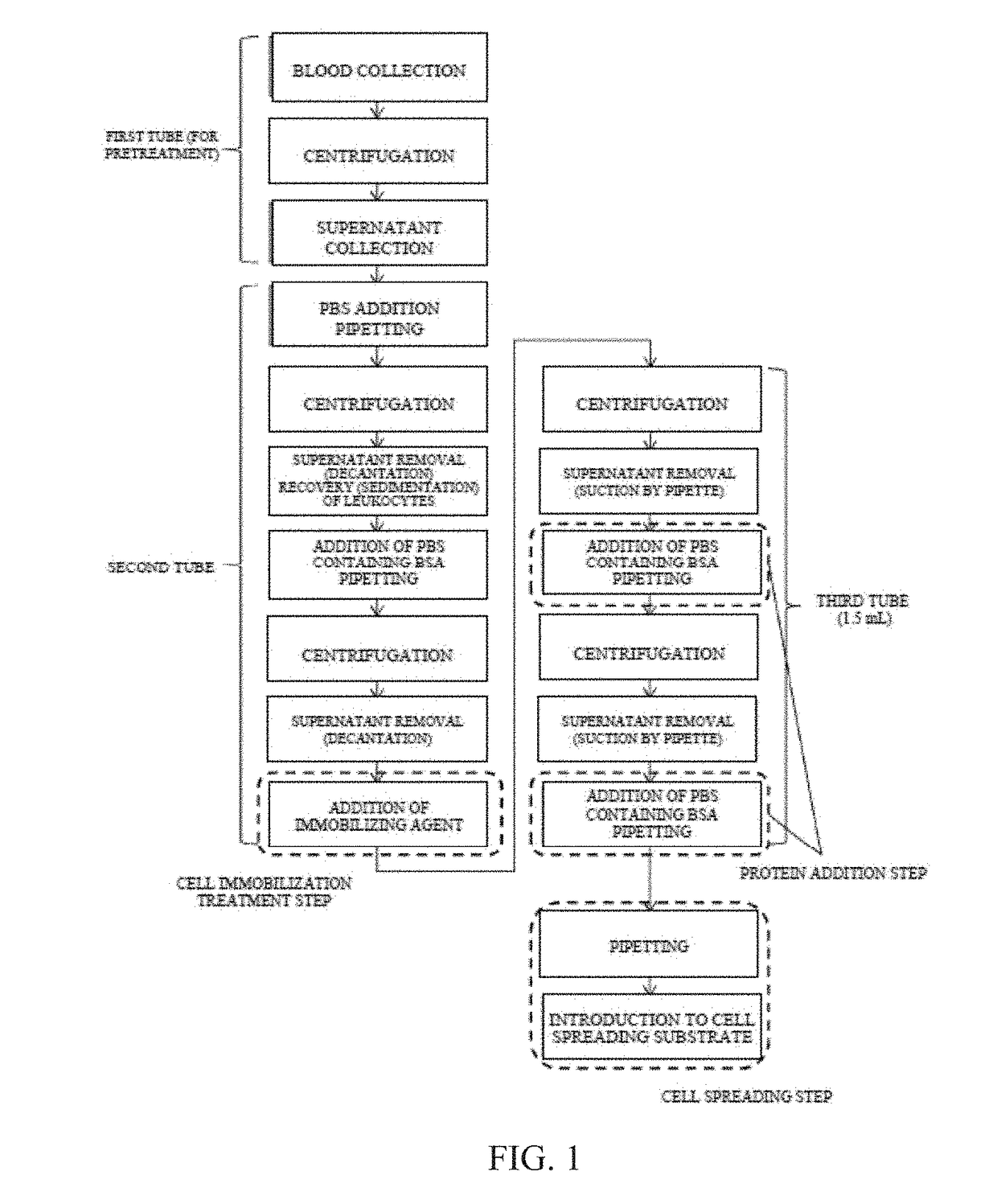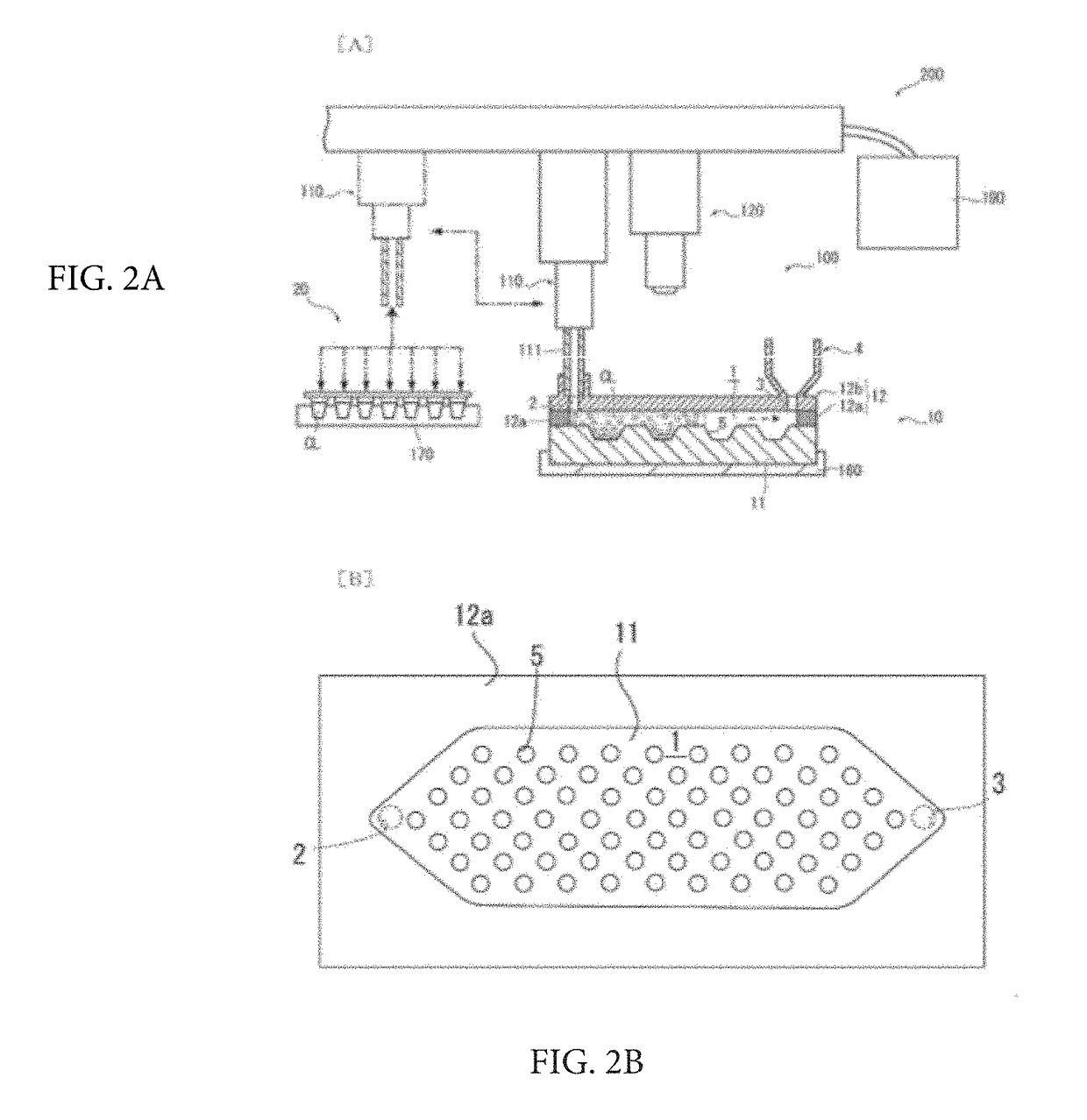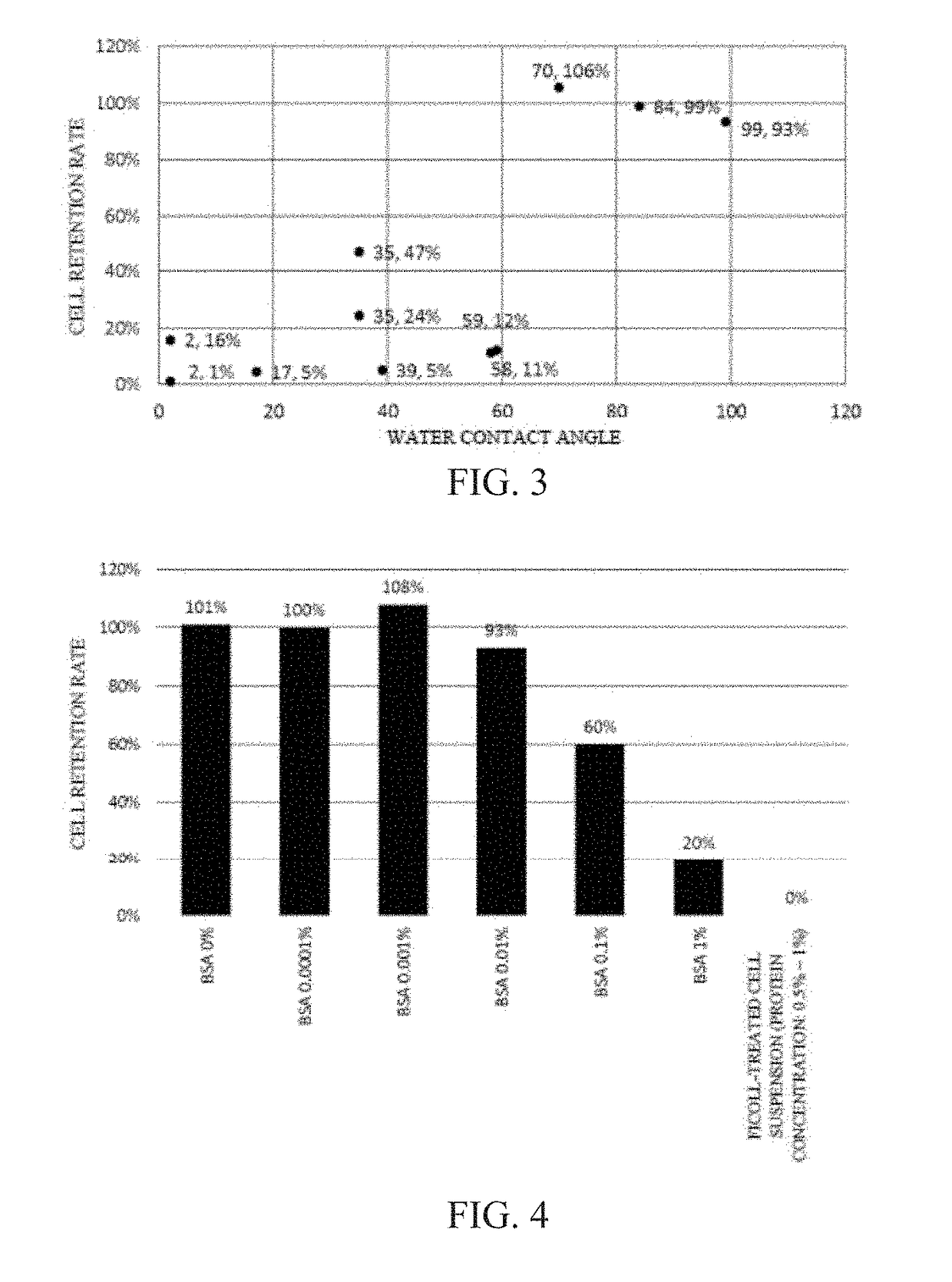Cell-spreading method and cell-spreading kit for observing rare cells
a cell-spreading and kit technology, applied in the field of rare cell detection, can solve the problems of difficult detection and counting of ctcs, extremely low ctc density in blood, etc., and achieve the effect of sufficient adsorption strength
- Summary
- Abstract
- Description
- Claims
- Application Information
AI Technical Summary
Benefits of technology
Problems solved by technology
Method used
Image
Examples
examples
[Experimental Example 1] (Screening of Contact Angle Between Water and Substrate that Provides Effect on Cell Adsorption to Substrate)
[0107][1-1] Preparation of Cell Suspension
[0108]A culture solution of CCRF-CEM cells (a human T-lymphocytic leukemia-derived cell line) was centrifuged at 200 G for four minutes, and the separated cells were washed with PBS twice. The cells were suspended in PBS to prepare 200 μl of a cell suspension with a concentration of 3.0×105 / ml. The cell suspension was subjected to a cell immobilization treatment by adding formaldehyde so as to give a final concentration of 0.4% in a PROTEOSAVE SS 1.5 ml Microtube (Product No. MS-4215M, registered trademark, Sumitomo Bakelite, ultra-hydrophilized, and made of polypropylene) at room temperature. The obtained cell suspension was used as the sample of Experimental Example 1.
[0109][1-2] Production of Cell Spreading Device
[0110]A cell spreading substrate molded using a predetermined mold was prepared, which substrat...
PUM
| Property | Measurement | Unit |
|---|---|---|
| contact angle | aaaaa | aaaaa |
| contact angle | aaaaa | aaaaa |
| contact angle | aaaaa | aaaaa |
Abstract
Description
Claims
Application Information
 Login to View More
Login to View More - R&D
- Intellectual Property
- Life Sciences
- Materials
- Tech Scout
- Unparalleled Data Quality
- Higher Quality Content
- 60% Fewer Hallucinations
Browse by: Latest US Patents, China's latest patents, Technical Efficacy Thesaurus, Application Domain, Technology Topic, Popular Technical Reports.
© 2025 PatSnap. All rights reserved.Legal|Privacy policy|Modern Slavery Act Transparency Statement|Sitemap|About US| Contact US: help@patsnap.com



